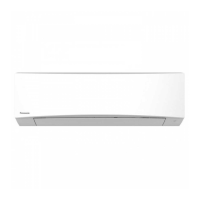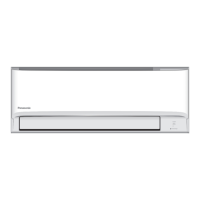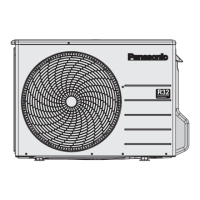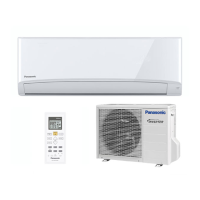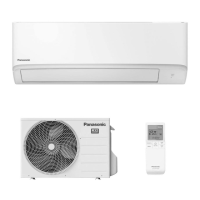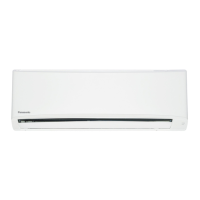8
2. Servicing
2-1. Service personnel
•
The system is inspected, regularly supervised
and maintained by a trained and certifi ed
service personnel who is employed by the
person user or party responsible.
•
Ensure the actual refrigerant charge is in
accordance with the room size within which
the refrigerant containing parts are installed.
•
Ensure refrigerant charge not to leak.
•
Any qualifi ed person who is involved with
working on or breaking into a refrigerant
circuit should hold a current valid certifi cate
from an industry-accredited assessment
authority, which authorizes their competence
to handle refrigerants safely in accordance
with an industry recognised assessment
specifi cation.
•
Servicing shall only be performed
as recommended by the equipment
manufacturer. Maintenance and repair
requiring the assistance of other skilled
personnel shall be carried out under the
supervision of the person competent in the
use of fl ammable refrigerants.
•
Servicing shall be performed only as
recommended by the manufacturer.
2-2. Work
•
Prior to beginning work on systems
containing fl ammable refrigerants, safety
checks are necessary to ensure that the
risk of ignition is minimised. For repair to the
refrigerating system, the precautions in #2-2
to #2-8 must be followed before conducting
work on the system.
•
Work shall be undertaken under a controlled
procedure so as to minimize the risk of a
fl ammable gas or vapour being present while
the work is being performed.
•
All maintenance staff and others working
in the local area shall be instructed and
supervised on the nature of work being
carried out.
•
Avoid working in confi ned spaces. Always
ensure away from source, at least 2 meter of
safety distance, or zoning of free space area
of at least 2 meter in radius.
•
Wear appropriate protective equipment,
including respiratory protection, as conditions
warrant.
•
Keep all sources of ignition and hot metal
surfaces away.
2-3. Checking for presence of refrigerant
•
The area shall be checked with an
appropriate refrigerant detector prior to and
during work, to ensure the technician is aware
of potentially fl ammable atmospheres.
•
Ensure that the leak detection equipment
being used is suitable for use with fl ammable
refrigerants, i.e. non sparking, adequately
sealed or intrinsically safe.
•
In case of leakage/spillage happened,
immediately ventilate area and stay upwind
and away from spill/release.
•
In case of leakage/spillage happened, do
notify persons down wind of the leaking/
spill, isolate immediate hazard area and keep
unauthorised personnel out.
2-4. Presence of fi re extinguisher
•
If any hot work is to be conducted on the
refrigerating equipment or any associated
parts, appropriate fi re extinguishing
equipment shall be available at hand.
•
Have a dry powder or CO
2
fi re extinguisher
adjacent to the charging area.
2-5. No ignition sources
•
No person carrying out work in relation to a
refrigerating system which involves exposing
any pipe work that contains or has contained
fl ammable refrigerant shall use any sources
of ignition in such a manner that it may lead
to the risk of fi re or explosion. They must not
be smoking when carrying out such work.
•
All possible ignition sources, including
cigarette smoking, should be kept suffi ciently
far away from the site of installation,
repairing, removing and disposal, during
which fl ammable refrigerant can possibly be
released to the surrounding space.
•
Prior to work taking place, the area around
the equipment is to be surveyed to make
sure that there are no fl ammable hazards or
ignition risks.
•
“No Smoking” signs shall be displayed.
2-6. Ventilated area
•
Ensure that the area is in the open or that it is
adequately ventilated before breaking into the
system or conducting any hot work.
•
A degree of ventilation shall continue during
the period that the work is carried out.
•
The ventilation should safely disperse any
released refrigerant and preferably expel it
externally into the atmosphere.
Safety Precautions
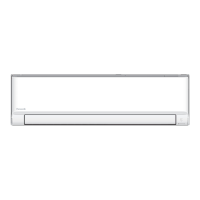
